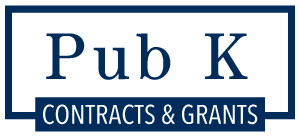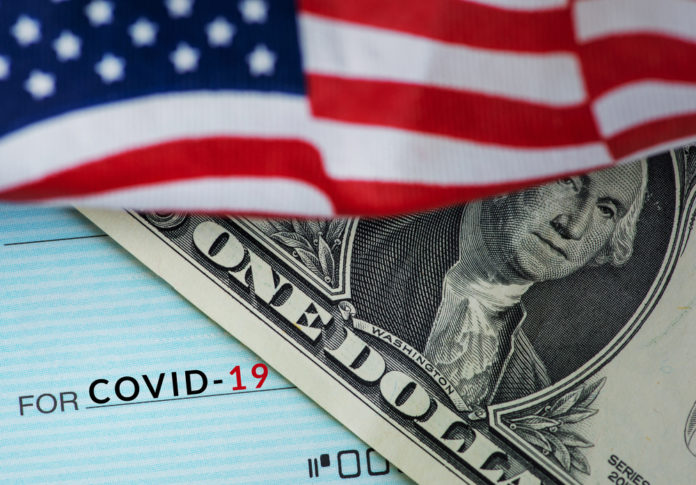By Aron C. Beezley & Sarah Sutton Osborne of Bradley Arant Boult Cummings LLP
Many federal contractors have already taken advantage of the Paycheck Protection Program (PPP), which was established by the CARES Act to help small businesses and other eligible applicants survive the economic impact of the COVID-19 pandemic. Under the PPP, eligible borrowers receive a loan from the government that is forgivable if they fulfill certain conditions — namely, using at least 75% of the loan to make payroll during a specified period. The forgiveness component of these loans is what makes them particularly attractive to borrowers — including government contractors — in need of relief. While PPP loans are intended to provide critical relief to eligible borrowers, for government contractors these loans may come with more strings attached than the plain text of the CARES Act indicates.
What are some of the potential complications for government contractors seeking relief under the CARES Act?
- First, the PPP (codified in §§ 1102 and 1106 of the CARES Act) does not specifically address § 3610 of the CARES Act — which, subject to certain conditions, allows agencies to reimburse contractors for any paid leave, including sick leave, a contractor provides to keep its employees or subcontractors in a ready state. Some agencies have raised concerns that relief under § 3610 may overlap with relief available to contractors under the PPP. For example, the Department of Defense (DoD) recently issued a memorandum to agency acquisition officials, along with a new Defense Acquisition Regulation Supplement (DFARS) cost principle, in which DoD placed the following limits on contractors’ ability to take advantage of both the PPP and “other COVID-19 relief scenarios,” including § 3610:
Some contractors may receive compensation from other provisions of the CARES Act, or other COVID-19 relief scenarios, including tax credits, and contracting officers must avoid duplication of payments. For example, the Paycheck Protection Program (PPP) established pursuant to sections 1102 and 1106 of the CARES Act may provide, in some cases, a direct means for a small business to obtain relief. A small business contractor that is sheltering-in-place and unable to telework could use the PPP to pay its employees and then have the PPP loan forgiven, pursuant to the criteria established in the interim rule published by the Small Business Administration. In such a case, the small business should not seek reimbursement for the payment from DoD using the provisions of Section 3610. [emphasis added]
In other words, the DoD indicates that contractors cannot “have their cake and eat it too” by both obtaining an equitable contract adjustment pursuant to § 3610 to pay workers and having their PPP loans forgiven. (Again, the main condition for PPP forgiveness is that at least 75% of the loan be used to make payroll). While this rule may make some sense, this “fine print” is not found in the sections of the CARES Act that establish the PPP. Instead, it was issued somewhat quietly after the fact. The DoD’s guidance also highlights that § 3610 provides agencies with the discretion to administer relief to contractors, and agencies may differ in their enthusiasm to provide such relief.
- Second, more concerning for government contractors is that agencies may seek credits or deductive changes from contractors who receive loans under the PPP. The DoD’s implementation of CARES Act guidance is again instructive on this point. On April 17, 2020, the DoD issued an update to its answers to frequently asked questions about the CARES Act, stating in part:
Question: Please confirm that neither the FAR Credits provision, FAR 31.201-5, the credit provision in the Allowable Cost and Payment Clause, FAR 52.216- 7(h)(2), nor any other FAR or DFARS provision imposes an obligation on a contractor to credit any amount of a Payroll Protection Program (PPP) loan that is forgiven to any flexibly priced government contract or subcontract. We consider a contractor that has received a PPP loan will use the loan proceeds as it would any other funds in its corporate treasury to pay costs of doing business.
Answer: We disagree that any PPP loan that has been forgiven can be treated as though it belongs to the company to use as it pleases. FAR 31.201-1, Composition of Total Cost, states that total cost is the sum of the direct and indirect costs allocable to the contract less any allocable credits. Accordingly, to the extent that PPP credits are allocable to costs allowed under a contract, the Government should receive a credit or a reduction in billing for any PPP loans or loan payments, regardless of whether the PPP loan is forgiven. [emphasis altered]
In other words, the DoD has taken the position that the government should receive a PPP credit from federal contractors — even if they must pay back their PPP loans with interest. This appears to create a situation where the government — not the contractor — would be the one double-dipping. Accordingly, federal contractors who do not end up having their PPP loans forgiven should take special note of the DoD’s pronouncement in this regard.
Contractors who do have their PPP loans forgiven should also take note. Indeed, this pronouncement appears to be inconsistent with the very idea of a forgivable loan. That is, if the proceeds of properly utilized PPP loans ultimately must get credited back to the government by contractors, then these loans are not truly forgivable. If that is the case, then the premise under which the loans were provided to contractors will have been misleading.
- Third, because government contractors are often subject to government audits and because the government, as a customer/client, already has federal contractors in its direct field of vision, there is a higher potential for post-PPP loan scrutiny of government contractors. Such post-loan scrutiny of government contractors may include examination of initial PPP eligibility issues, PPP loan applications and usage, and PPP forgiveness requests.
Further, at a contract-administration level, contractor cost accounting and the application of loan proceeds to allowable and allocable costs may be subjects of future audits. Accordingly, federal contractors need to be particularly mindful of these realities. They should also take proactive steps to document the accuracy of certifications made and compliance with PPP loan usage and forgiveness requirements and closely track the use of loan proceeds that may be allocable to government contracts.
What are the key takeaways?
While PPP loans may offer welcome relief to many eligible borrowers, government contractors are likely to face unique challenges in taking full advantage of this program. Government requests for PPP credits, additional scrutiny, increased paperwork and red tape, and varying implementation by administering agencies are just some of the potential hurdles government contractors may confront. To emphasize: The above-discussed scenarios uniquely (and perhaps unfairly) impact federal contractors, many of whom are providing critical COVID-19-related and other essential services. Government contractors, accordingly, must be particularly cautious and vigilant when it comes to PPP matters.
Reprinted with permission. Originally published by Bradley Arant Boult Cummings LLP. Copyright 2019.



